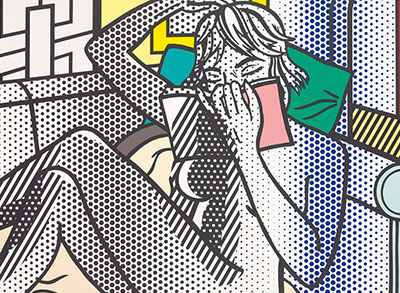
Roy Lichtenstein
Roy Lichtenstein was a leader in the American Pop Art movement, best known for his boldly-colored compositions in the style of comic strips and advertisements. Lichtenstein’s iconic use of Benday dots, heavy outlines, and primary colors make his artwork instantly identifiable. He embodied “sixties cool” with a kind of disengagement unlike the weighty emotional work of the Abstract Expressionists. Read More


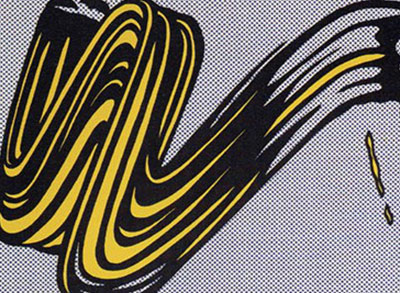

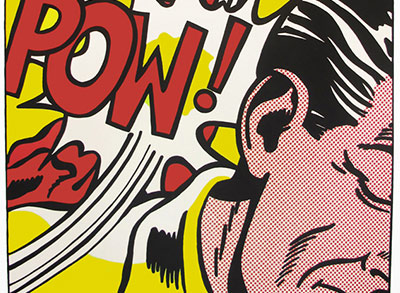
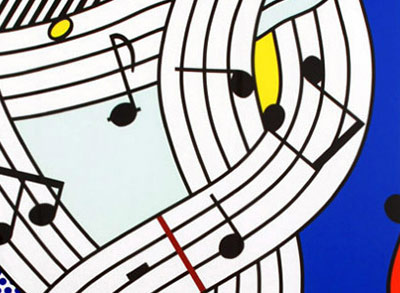

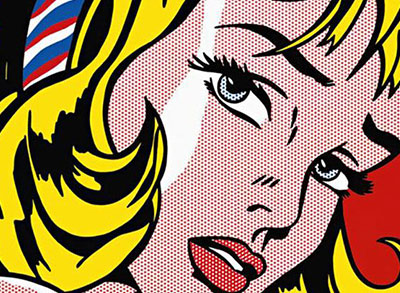
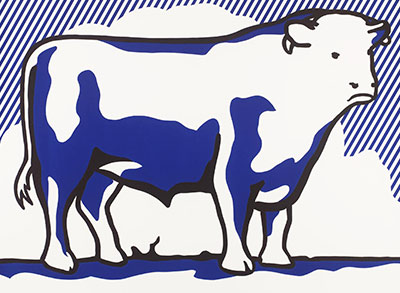

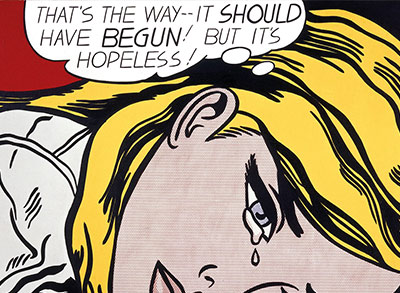
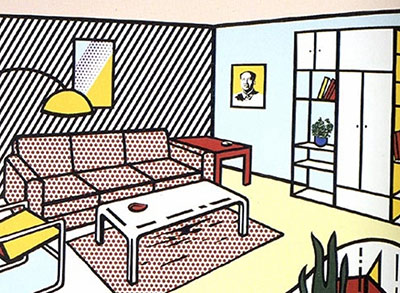
Lichtenstein was born in New York City in 1923, the son of Milton and Beatrice Werner Lichtenstein. His father owned a real estate firm. As a boy growing up on Manhattan's Upper West Side, Lichtenstein had a passion for both science and comic books. In his teens, he became interested in art. He took watercolor classes at Parsons School of Design in 1937, and he took classes at the Art Students League in 1940, studying with American realist painter Reginald Marsh. Following his graduation from the Franklin School for Boys in Manhattan in 1940, Lichtenstein enrolled at Ohio State University. His college studies were interrupted in 1943, when he was drafted and sent to Europe for three years for World War II, during which time he drew up maps for planned troop movements across Germany during World War II. After the war he returned to Ohio State to get his bachelor’s degree and master's degree both in Fine Arts and then to teach. He briefly taught at Ohio State before moving to Cleveland and working as a window-display designer for a department store, an industrial designer and a commercial-art instructor. In the late 1940s, Lichtenstein exhibited his art in galleries nationwide, including in Cleveland and New York City.
In 1951, Lichtenstein came back to New York City and had his first one-man show. He also continued to teach, first at the New York State College of Education at Oswego, and later at Douglass College, a division of Rutgers University in New Jersey. Through the 1950s, Lichtenstein used the basic techniques of abstract expressionism, but incorporated into his compositions such themes as cowboys and Indians and paper money. In 1961, however, while at Douglass College, impressed by the work of colleague Allan Kaprow, he turned to the use of comic-strip and cartoon figures by which he is known today.
Primary colors--red, yellow and blue, heavily outlined in black--became his favorites. Occasionally he used green. Instead of shades of color, he used the Benday dot, a method by which an image is created, and its density of tone modulated in printing. Sometimes he selected a comic-strip scene, recomposed it, projected it onto his canvas and stenciled in the dots. "I want my painting to look as if it had been programmed," Lichtenstein explained.
Lichtenstein achieved international acclaim exhibiting in prominent museums around the world and being honored with awards throughout the United States, in Italy and Japan to name a few. By the mid-1960s, he was nationally known and recognized as a leader in the Pop Art movement that also included Andy Warhol, James Rosenquist and Claes Oldenburg. His art became increasingly popular with both collectors and influential art dealers. In 1967 his first museum retrospective exhibition was held at the Pasadena Art Museum in California. Also in this year, his first solo exhibition in Europe was held at museums in Amsterdam, London, Bern and Hannover. His painting Torpedo...Los! sold at Christie's for $5.5 million in 1989, a record sum at the time, making him one of only three living artists to have attracted such huge sums.
Lichtenstein's long career and large body of work brought him appreciation as one of America's greatest living artists. In 1994 he designed a painting for the hull of the United States entry in the America's Cup yacht race. A series of sea-themed works followed. In 1995, he was awarded the National Medal of the Arts in Washington, D.C. That same year the Los Angeles County Museum of Art launched a traveling exhibition, "The Prints of Roy Lichtenstein," which covered more than twenty years of his work in this medium. He received honorary Doctorates in Fine Art from many notable universities including: The George Washington University, Washington D.C; California Institute of Fine Arts, Valencia, California; Ohio State University, Columbus, Ohio; Bard College, Annendale on the Hudson, New York; and Royal College of Art, Kensington Gore, London.


